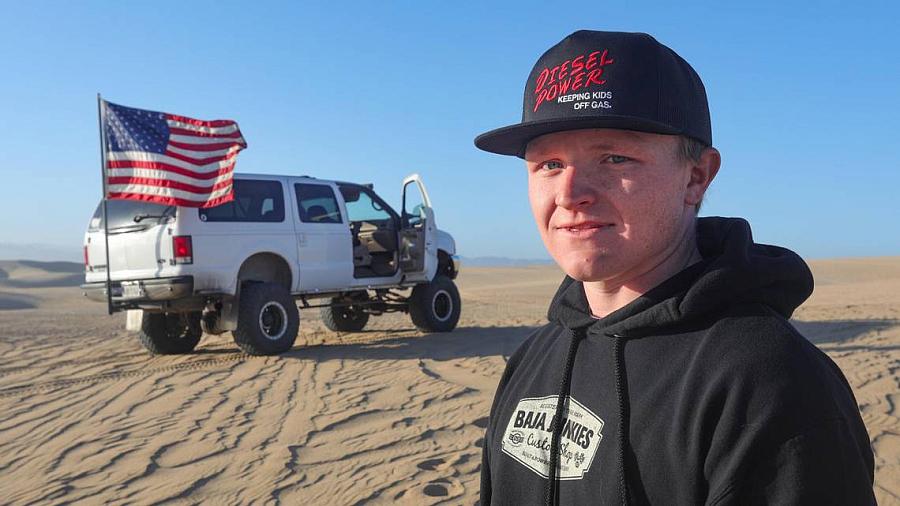Engagement proves clutch in telling broader health story of California off-road park

Austin Gladden, 19, poses for a picture at the Oceano Dunes State Vehicular Recration Area near Pismo Beach.
(Photo by David Middlecamp/The Tribune)
In the midst of my reporting on the health effects of bad air quality downwind of an off-road park along the California coast as a 2019 California Fellow with the Center for Health Journalism, our newsroom was confronted with another pressing public health tragedy.
More off-highway vehicle riders died on the Oceano Dunes in the last three months than in any year in the state park's history.
With six fatalities since April — and only halfway through the busy summer season — our staff at the San Luis Obispo Tribune felt an urgent need to investigate what lead to deadly crashes at the popular park and what state park managers are and aren't doing to improve safety of this well-loved recreational activity on the Central Coast.
We also knew that people who have driven in the dunes for decades would have the best ideas to mitigate risks and could help underscore the human impact that these crashes have on a beloved family tradition.
That's where the engagement support provided by the Center for Health Journalism was clutch.
We came into contact with a passionate 19-year-old rider through an online questionnaire we circulated while researching the health effects of poor air quality. He didn't experience health effects and is dubious of the science that points to the park as a cause, he told us.
He reached out to interim engagement editor Danielle Fox and shared his personal story of why the dunes are so important to him. He was in a fatal OHV collision on the dunes when he was just 6 years old. And to this day, the dunes are the place that provide him the therapy that he needs to cope with PTSD.
Austin Gladden was generous in sharing his story, which offered us the nuanced and intimate portrait we needed to tell this story well.
Our reporting was further supported by engaging with The Tribune's Facebook community to ask riders how the park could be made safer. From there we gained more insight and ideas that could both be implemented immediately by riders themselves, and passed on to California State Parks leadership for consideration.
Read the full story here.

